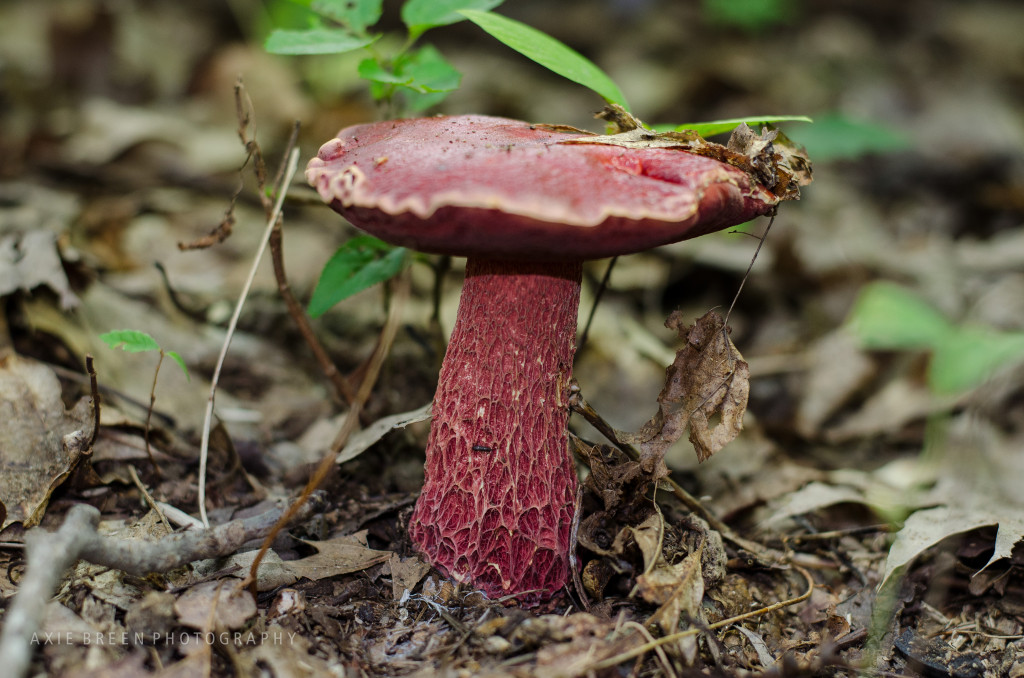 A very distinctive mushroom because the whole thing is dark red, it’s pretty big, and it has this internal-organ looking stem. In Mexico, the common name is panza agria, meaning “sour belly”.
A very distinctive mushroom because the whole thing is dark red, it’s pretty big, and it has this internal-organ looking stem. In Mexico, the common name is panza agria, meaning “sour belly”.
Frost’s Bolete, Apple Bolete (Exsudoporus frostii)

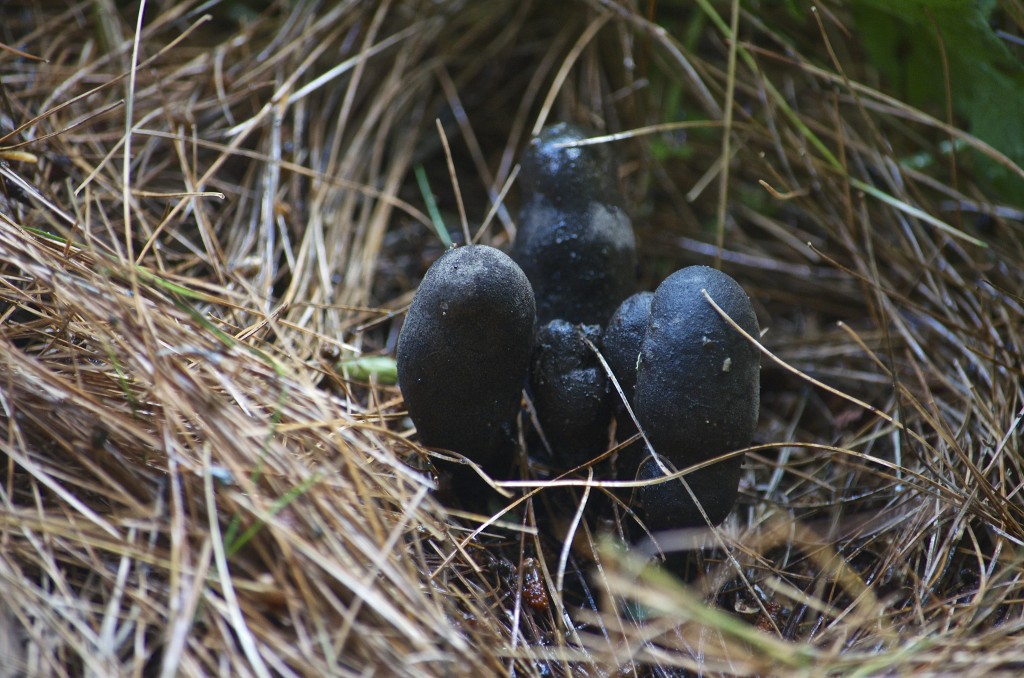 Look at this bizarre little fungus, like black sausages standing on end. In spring, they’re covered with a white powder (the spores). Part of the latin name, polymorpha, means it can take many forms, but it’s often in this club shape. Belongs to the same class of fungus as morels and truffles, but these are inedible. Common to eastern North America.
Look at this bizarre little fungus, like black sausages standing on end. In spring, they’re covered with a white powder (the spores). Part of the latin name, polymorpha, means it can take many forms, but it’s often in this club shape. Belongs to the same class of fungus as morels and truffles, but these are inedible. Common to eastern North America.
Dead Man’s Fingers (Xylaria polymorpha)
I’m new to identifying mushrooms, but apparently this is a poisonous mushroom that causes death by liver failure from eating just one. Identifying features: has a smooth white cap (sometimes with a tan tint in the center, like this one), gills, and a drapy skirt-like ring near the cap. The first stage of poisoning is called the incubation stage: 6-12 hours with no symptoms while it takes over without you noticing. Don’t eat white mushrooms!
Eastern North American Destroying Angel, Deadly Amanita, White Death Cap, Angel of Death (Amanita bisporigera)
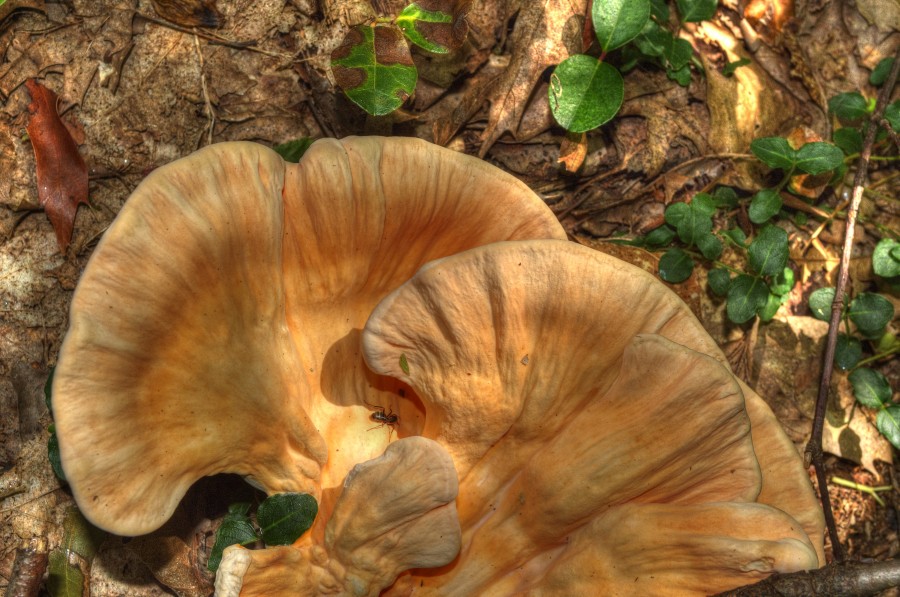 Okay, I like wildflowers, but I have to admit, once you start paying attention to the fungi, they are pretty cool visually and they have interesting back stories. Look at this big fleshy thing living on the forest floor! I also confess that so many different-looking fungi are named Sulphur Shelf that I find it hard to be certain if I have this identification right. It’s not like flowers where you can count the petals and observe the leaf structure and you can (usually) get a clear-cut identification.
Okay, I like wildflowers, but I have to admit, once you start paying attention to the fungi, they are pretty cool visually and they have interesting back stories. Look at this big fleshy thing living on the forest floor! I also confess that so many different-looking fungi are named Sulphur Shelf that I find it hard to be certain if I have this identification right. It’s not like flowers where you can count the petals and observe the leaf structure and you can (usually) get a clear-cut identification.
Sulphur Shelf, Chicken-of-the-woods (Laetiporus sulphureus)
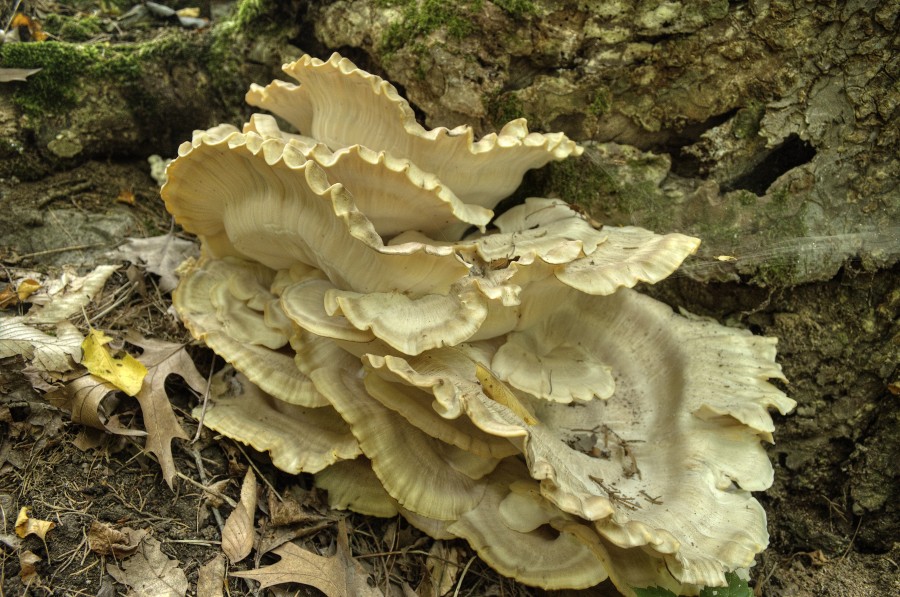
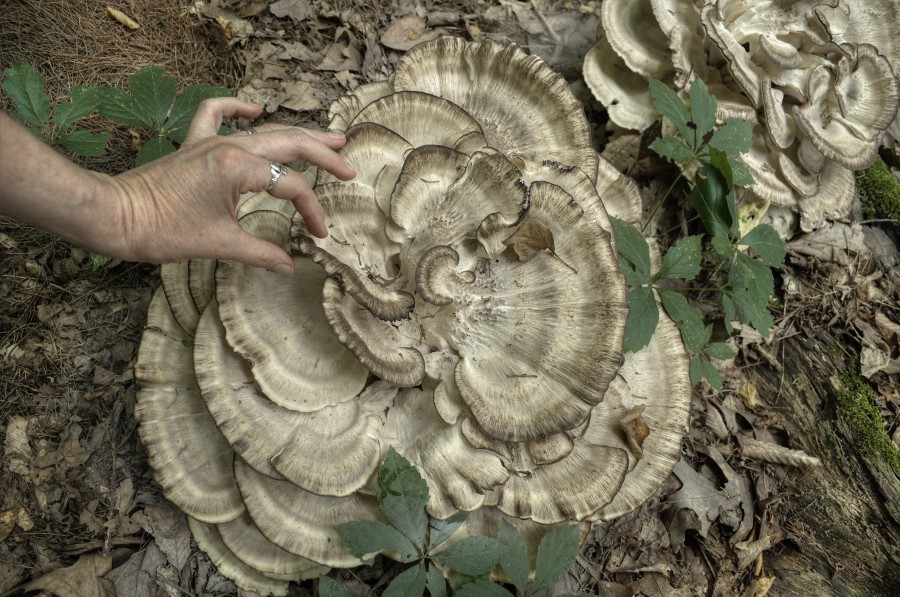 Sometimes there’s a non-wildflower item that demands notice! In our woods, there were several of these big ruffly fungi all growing around an old tree stump (my hand added for scale). I took these July 21; now they’ve pretty much withered, darkened and disappeared. I’m finding fungus identification difficult — there are many that look similar to me, and there can apparently be lots of variation within a species. That said, I think this is a Giant Polypore — can get to be 30 inches in diameter.
Sometimes there’s a non-wildflower item that demands notice! In our woods, there were several of these big ruffly fungi all growing around an old tree stump (my hand added for scale). I took these July 21; now they’ve pretty much withered, darkened and disappeared. I’m finding fungus identification difficult — there are many that look similar to me, and there can apparently be lots of variation within a species. That said, I think this is a Giant Polypore — can get to be 30 inches in diameter.
Giant Polypore, Black-staining Polypore (Meripilus giganteus)